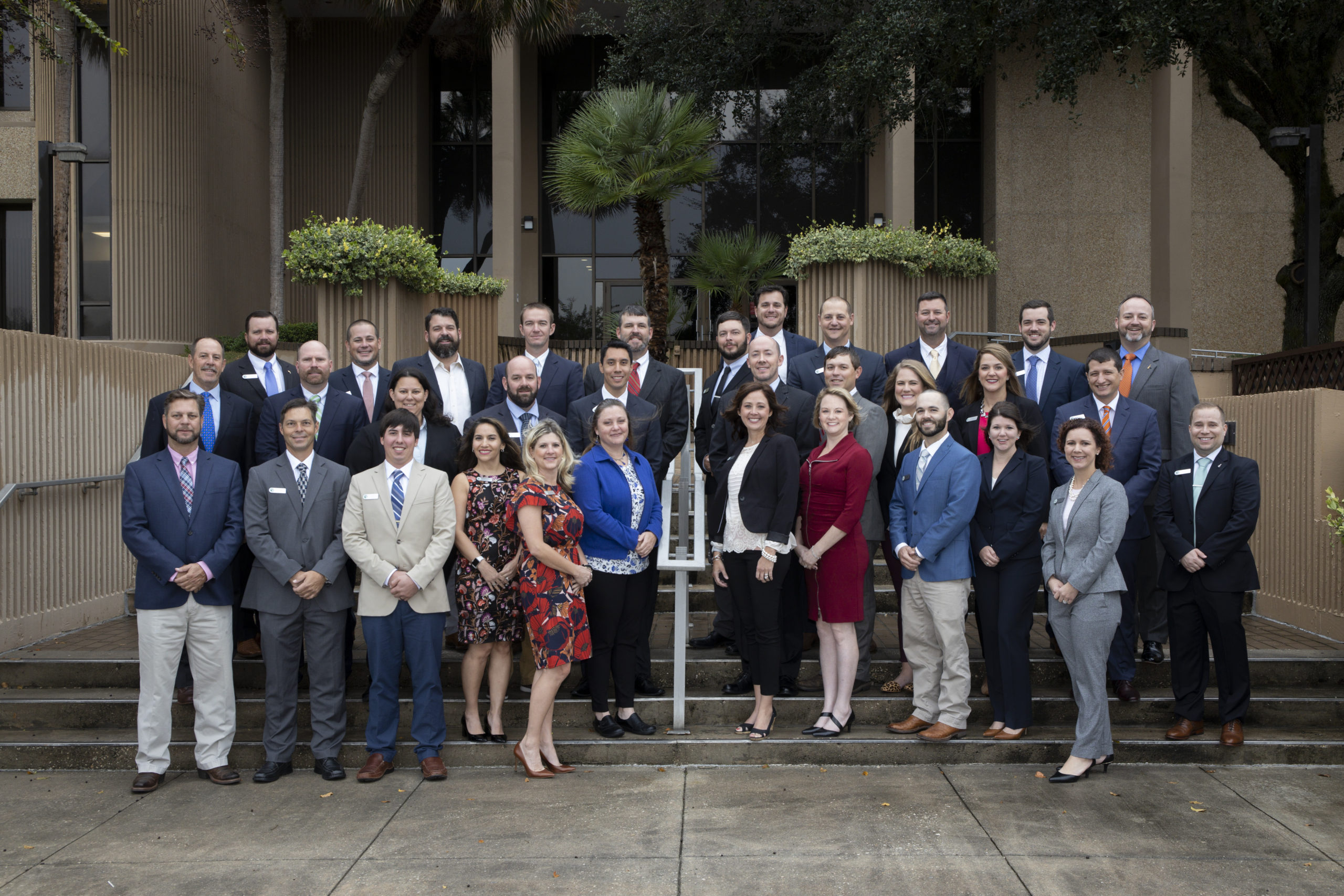
Temptations of Talent
Growing up, I was not very good at sports. To be transparent, “not very good” is giving myself grace. First, it was soccer. My asthmatic lungs whimpered each time the ball soared past me. Next, I tried out softball. I am convinced my hand-eye coordination gene has a permanent “out of order” sign. Then, my parents enrolled me in tennis lessons. Again, flying objects? Not a highlight of my childhood. What did I do? I quit. First, soccer then softball and finally tennis. I do not recall how I introduced the idea of quitting each time, but I clearly remember how my parents reacted. Initially, I was met with disappointment. The disappointment would merge into offers of private coaches and additional lessons. My refusal transformed into new sports pamphlets conveniently arriving on the kitchen counter.
At ten-years-old, I had to take ownership of my apparent lack of talent. I crushed my father’s dreams of proudly waving down at me as I accepted an Olympic gold medal on behalf of the United States. Looking back at this time in my life, this should have been obvious to my parents. I run at the pace of a turtle stampeding through peanut butter. I would beg to be taken to the library and was disappointed when I was brought to the playground. I was talented in a lot of areas. Athletics was not one of them. My parents overlooked the evident signs of my lack of ability with the blissful hope that I could be coached or trained to be great.
This seems like a simple concept. Do not make someone do what they are not good at. However, most organizations are built on the same blissful hope of two inaccurate assumptions:
- Each person has the ability to be competent in almost anything.
- Each person has the biggest room to grow where they are weak.
These assumptions guide why organizations spend so much time and resources training people to gain necessary skills rather than hiring and using those who already have them. Think of it this way – your organization has money set aside to send one employee to public speaking professional development training. You are trying to decide between two people – the one who naturally gives presentations well or the individual who has a challenging time conveying their thoughts publicly. Who do you send? Most people gravitate towards the person who has a weakness in public speaking. However, when it comes time to ask one of them to speak on behalf of your organization the person with natural talent is often selected.
Organizations are at their strongest when people are doing what they are good at. Through interviews with top global performers, Clifton identified that talent is innate. Through an investment of time and energy, those who are naturally talented can master or perfect their craft. With the same investment, individuals who do not possess the talent may show improvement; however, this will not be equivalent to those who already start with the innate ability.
We are often tempted to ignore our talents. We know the three areas that we struggle but overlook the ten where we naturally excel. Focusing on one’s weaknesses will prevent failure, but it will never encourage success. To be successful, you must manage your weaknesses but invest in your talents.
Managing weaknesses and focusing on weaknesses are very different tasks. Those who manage their weaknesses reach out to individuals who are skilled in areas where they are weak. You rely on your team rather than yourself when you know it is not an area you excel in.
As leaders, it can be challenging to give up control and ask for help. We often think that relying on others shows that we are lacking. However, the sign of a true leader is one who has their organization’s best interest in mind. Using self-awareness to illuminate areas where you need help is a foundational piece to being an authentic leader.
Identifying weakness takes strength. Be proud of where you are strong, and identify those who can help you where you are weak.
Thoughts to reflect on:
- What are the areas in your life where you should rely on others’ help?
- How are you investing in your talents?
- How are you encouraging those around you to invest in their talents and become the best?
Clifton Strengths perspective adapted from Now, Discover Your Strengths (2001) by Marcus Buckingham & Donald O. Clifton.
Clifton Strengths for Class XI
- Responsibility – individuals who are committed to what they say they will do
- Achiever – those who work hard and take great satisfaction from being busy and productive
- Ideation – people who are fascinated by ideas
- Deliberative – those who take serious care in decision making and choices
- Arranger – individuals who can organize, but combine resources for maximum productivity
Futuristic – people who are inspired by the future and what could be
Analysis:
With 278,256 unique combinations of Clifton Strengths talents, Class XI is one of a kind. What does this combination of themes mean for the leaders embarking on their journey with the Wedgworth Leadership Institute? With four out of six talents in the executing domain, Class XI is exceptionally talented in making things happen. Those with talents in the executing domain work tirelessly to make an idea come to life. Paired with the remaining two strengths in the strategic thinking domain, Class XI also has the ability to think through possibilities and analyze opportunity.
For Class XI to transform their talents into strengths, it requires effort. One must be willing to intentionally invest their time, effort, and energy into their talents. Think through how you have used your talents in the past week. What tasks did you complete that came naturally to you? Did you receive a compliment on any task you have completed? What contributed to you having a great day? If any of those answers came quickly to you, perhaps it’s because you were naturally flexing your talents. As individuals in leadership roles, we must channel what makes us talented and how we can uniquely serve those around us.
Thoughts to Reflect On:
- How can you plan to invest time in your talents in the next two weeks?
- What talents, from Class XI or in general, accurately represent Florida’s agricultural and natural resources industries as a whole?
For more information regarding Clifton Strengths, please feel free to contact Megan Stein, mstein17@ufl.edu.


Architects: Leaders for the next decade
It’s that time of year – we’re either excited that we’ve got all of our Christmas shopping done or we are frantic that we haven’t even started shopping yet. Regardless, it’s the end of the year, and well, the end of a decade. As we sip our holiday beverages or search for what can be delivered next day on Amazon, it’s a great opportunity to reflect on the last 365 days and the past 10 years.
Looking back on this past year, a lot has happened, and it seemed to have all happened so fast. One of the most notable experiences from this past year includes my involvement with the Wedgworth Leadership Institute. This year, we welcomed our new director Christy Chiarelli, met some of Florida agriculture’s brightest while traveling to selection seminars, and kicked off a very impactful first seminar with Class XI. The first seminar was nothing short of awesome – inspiring speakers, thought-provoking conversations, and great fellowship.
But as I reflect solely on Seminar I, several of our speakers used a term in their remarks that really stood out to me: architect. I wrote it down in my Wedgworth journal several times then underlined or circled it. It was a fascinating connection between leadership and what we do as leaders in the “real world.” We heard it in a couple of different contexts: be an architect… of culture for your organization, …and design a space for collaboration, … and create an environment for productivity. This one term answers a really big question that we face often as leaders – now what? We’ve stepped up to the plate as leaders. Now what?
I’m a graphic designer by trade, and I really enjoy making things not only look good, but ensure they are useful and effective. I’ve developed a passion for designing experiences that inspire or engage people to do big things. Whether it’s a website, conference, or even an app (more on this later), it’s very similar to being an architect of sorts. A very important and common element in becoming this architect is intentionality.
If you’ve ever been part of a construction project, you understand the level of detail that must be considered all throughout the process. From the early stages of “let’s build something,” to determining the exterior wall color and which doors have locks, there’s so much that goes into designing and building a structure of any type. An architect must consider every single detail: fire and safety, accessibility, effective use of space, energy efficiency, and things I would never even think of when constructing a building. In addition to all of these details, they are also delivering a space that is inviting, serves a purpose, houses conversation, and creates a sense of structure.
What can we learn from architects? One crucial takeaway is intentionality. As a leader in your community or organization, have you intentionally considered how you lead others or create a culture with others? Like an architect, this means considering the details from start to finish, internal and external. And a good architect shows careful consideration to every detail, making an effective use of every square foot and creating appeal with every corner.
As an architect you design for the present, with an awareness of the past, for a future which is essentially unknown.
Norman Foster
It’s the end of the year and you may be asking yourself that bold question, “Now what?” My challenge to you would be to become an architect. Now, don’t put away your boots or sell off the land to head back to school for building and construction… I mean become an architect of culture, collaboration, and productivity. Consider what you can do intentionally to contribute to these important components of our industry. Our issues aren’t going to become less challenging anytime soon, so we have to be intentional with how we approach problem solving. And problem solving involves people. Lots of people. Different types of people. People with different perspectives. As an architect/leader, how can we intentionally bring these people together to resolve an issue? How can we intentionally schedule a meeting to encourage collaboration? How can we intentionally create a culture that drives innovation and moves agriculture forward?
It’s a pretty bold challenge and question to consider. But if I learned anything from my experience with construction, there’s a lot of people involved. The architect works with the contractor or builder to help ensure the project becomes a reality. As leaders, we can also work with our boards, managers, and others to ensure that our leadership plan comes together. This is another opportunity to be intentional.
At the first seminar, I was able to briefly share the answer to my own “now what?” for my role with Wedgworth. Over the past couple of years, we’ve been dreaming about what the future of leadership development looks like. We wanted something to keep our networks connected and provide an opportunity to continue growing as leaders. Now, there’s an app for that. Next year, we will be introducing the Wedgworth Leadership app. Class XI participants will be the first to use the app with plans to roll out the app to alumni members shortly after. The app will include Wedgworth’s own social network and “notebooks” of resources for continuous learning.
We’re looking forward to sharing this with each of you. Just like an architect, we drew out the plans and sweated the details. This was our opportunity to build a new structure that could bring people together and make a difference. We hope the app engages agriculture’s own architects to grow as leaders in the next decade.
So, now what?


Director’s Dialogue
It’s not okay to be okay.
Mr. Jeremy Foley, UF Athletic Director Emeritus
This statement shared at Class XI’s first seminar perfectly describes the sentiment of my first six months as program director. So many alumni and friends of the program have offered their support and have all been consistent in their message about the preeminence of this program. When I heard Jeremy Foley make this statement, it summed up my goal for the Wedgworth Leadership Institute for Agriculture and Natural Resources. It’s not okay to be okay.
For our industries to survive in today’s climate, “okay” doesn’t cut it. We must be the standard bearers for the leadership we want to see in Florida agriculture and natural resources. In reviewing the 63 applications for Class XI, it was evident that “okay” people weren’t nominated. We have a class of 30 individuals who represent 22 unique sub-sectors of the industry, from citrus to cattle to sod production. Class members also bring geographic diversity, representing 22 different counties across the state, from Calhoun to St. Johns to Miami-Dade.
Two individuals helping Janice and me ensure Class XI has a first-class experience are Brian Myers and Kevin Kent. Brian is the department chair for the UF/IFAS Agricultural Education and Communication Department and is serving in the role of faculty adviser for Class XI. Kevin is a doctoral student and serving as the program coordinator for Class XI. I’m thrilled to have both gentlemen on our team.
I hope you enjoy the first edition of Class XI’s Wedgworth Wire. We have changed the newsletter format just a bit in an effort to be responsive to digital content management. If you have any feedback, please don’t hesitate to reach out to me.
My hope, as we approach 2020, is none of us will settle for simply “okay.” But rather continue to serve as high-impact leaders in our industries and communities and use our WLI network to support and advance Florida agriculture and natural resources.



You must be logged in to post a comment.